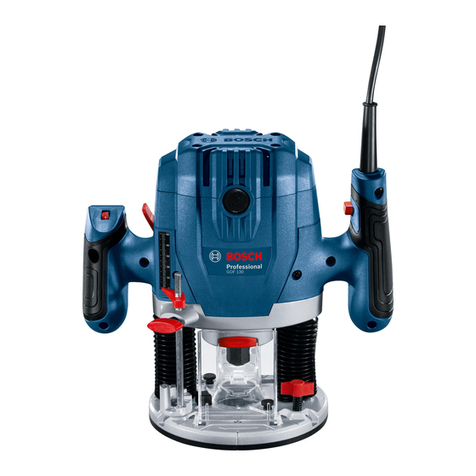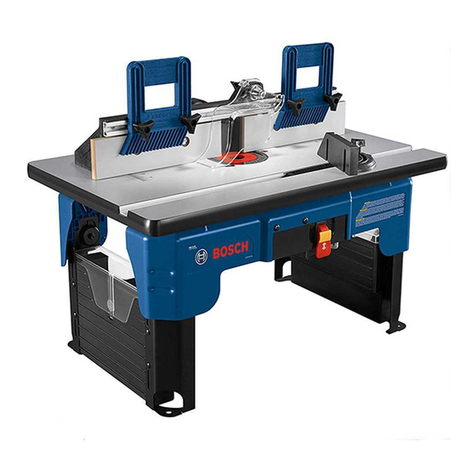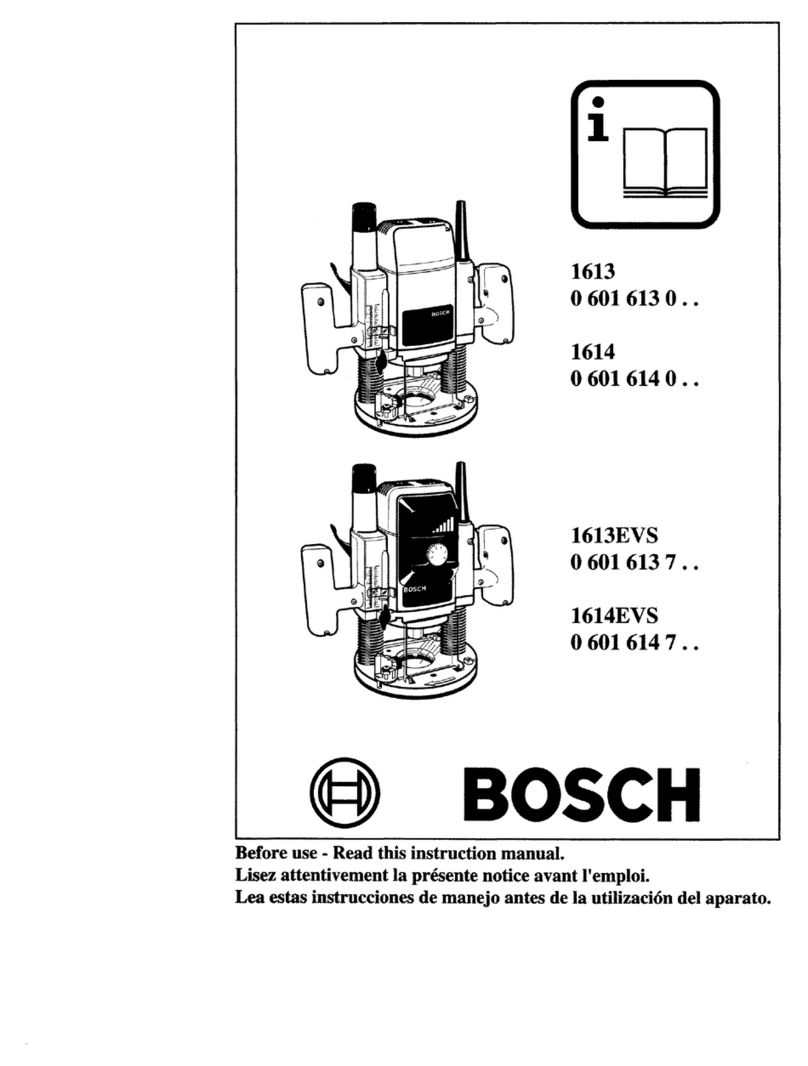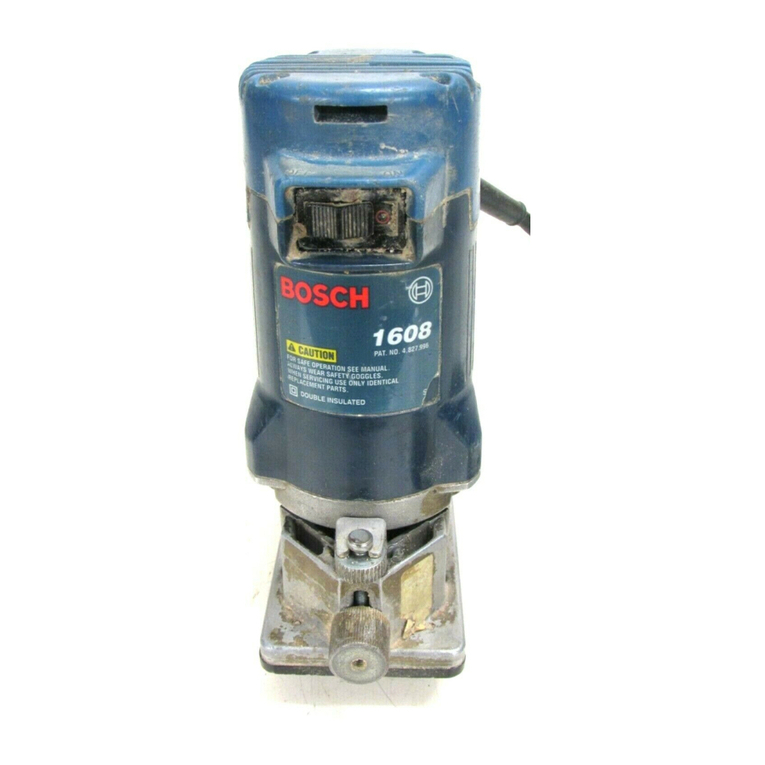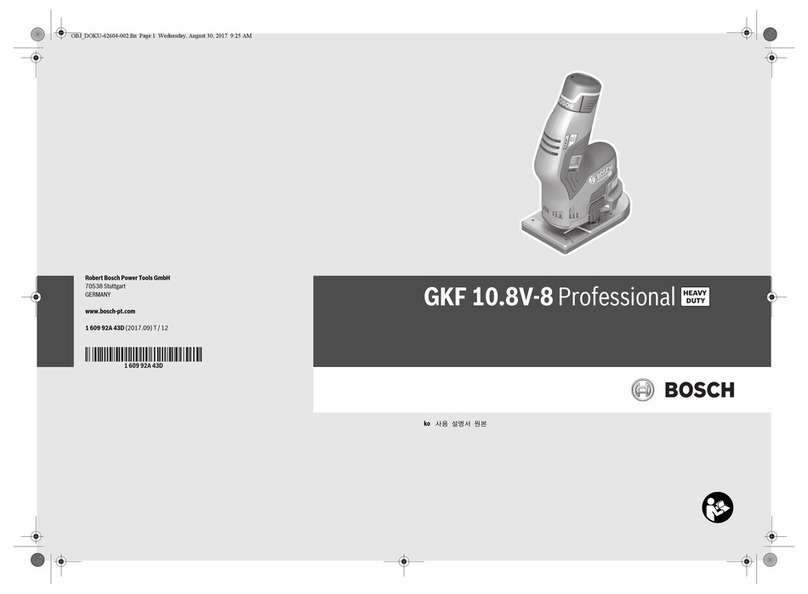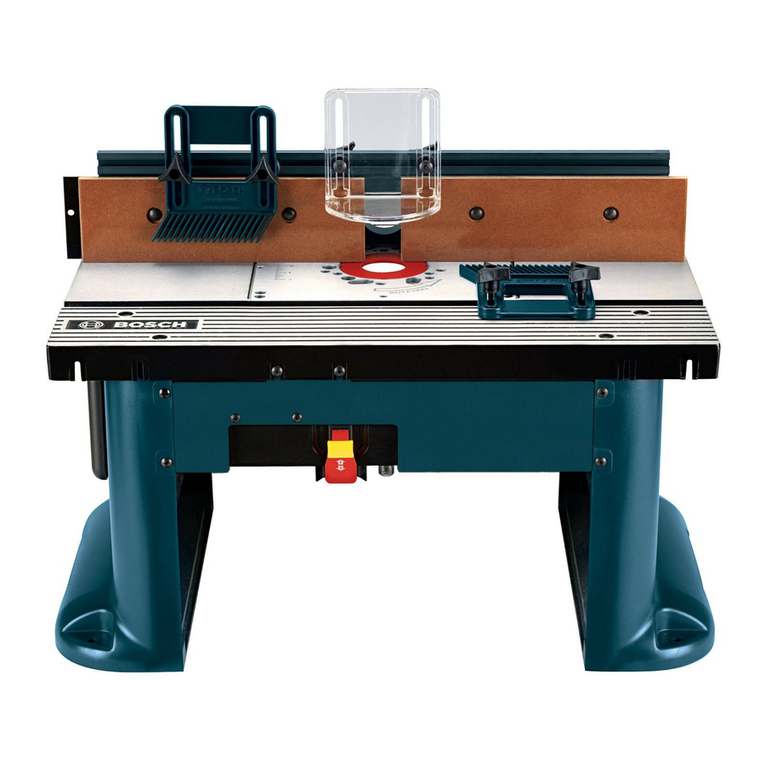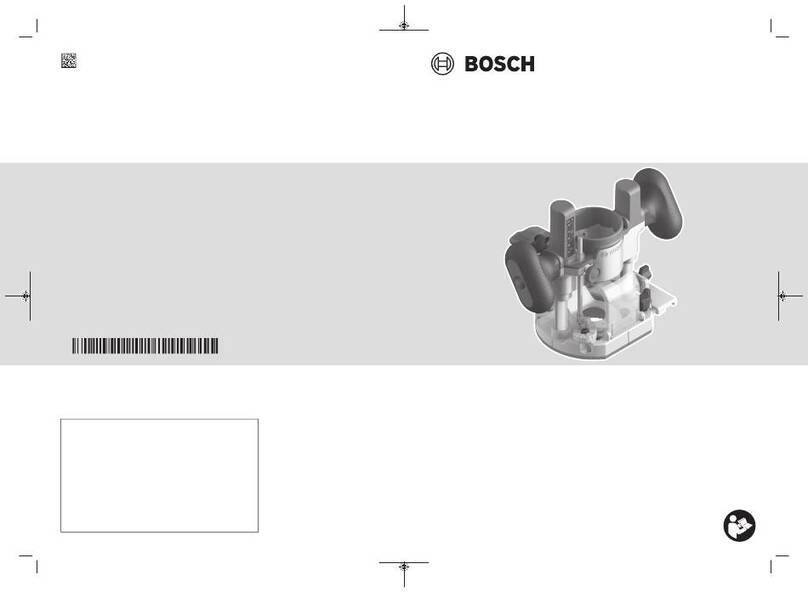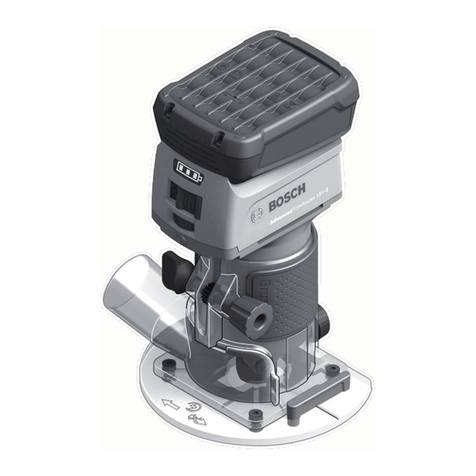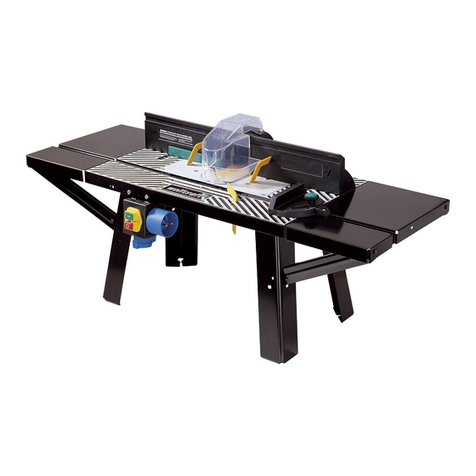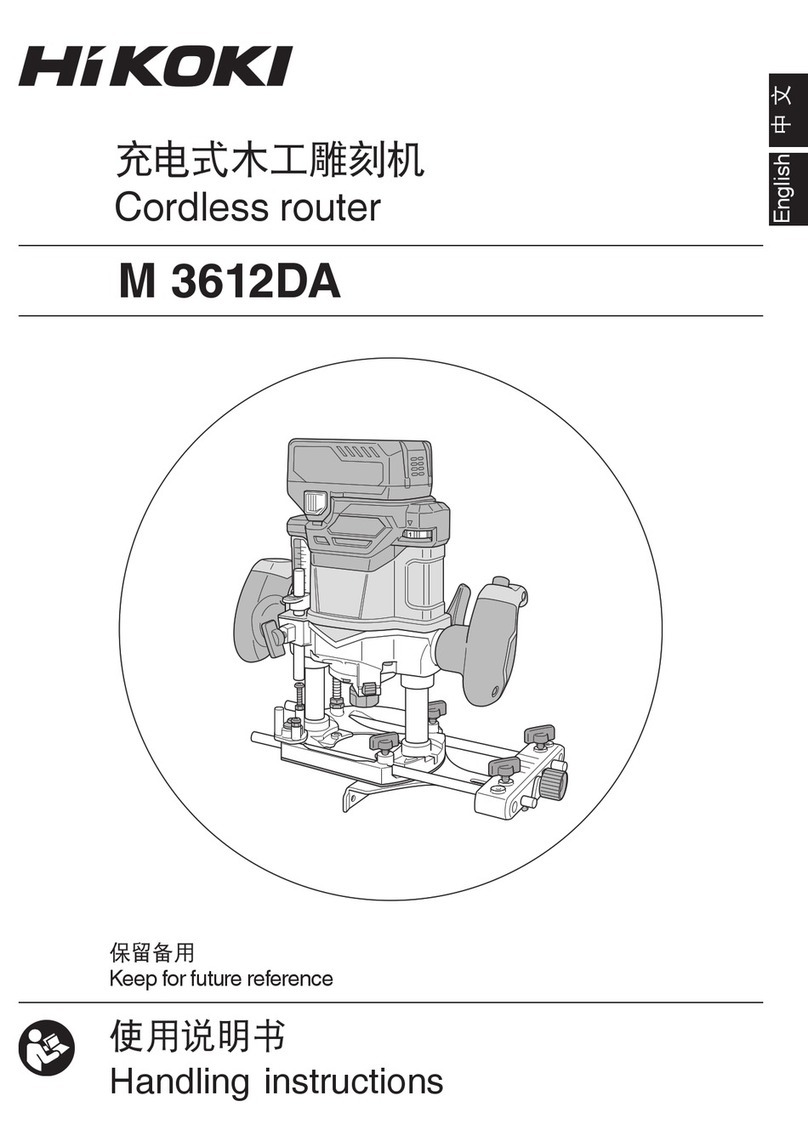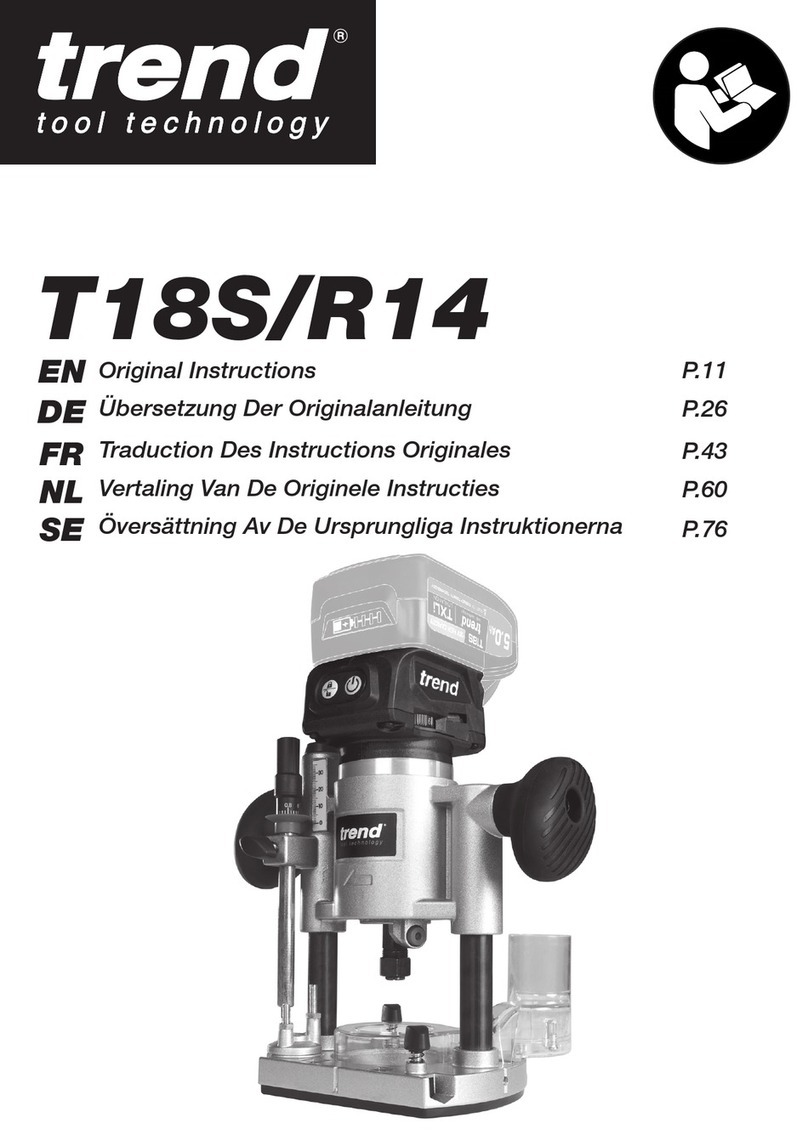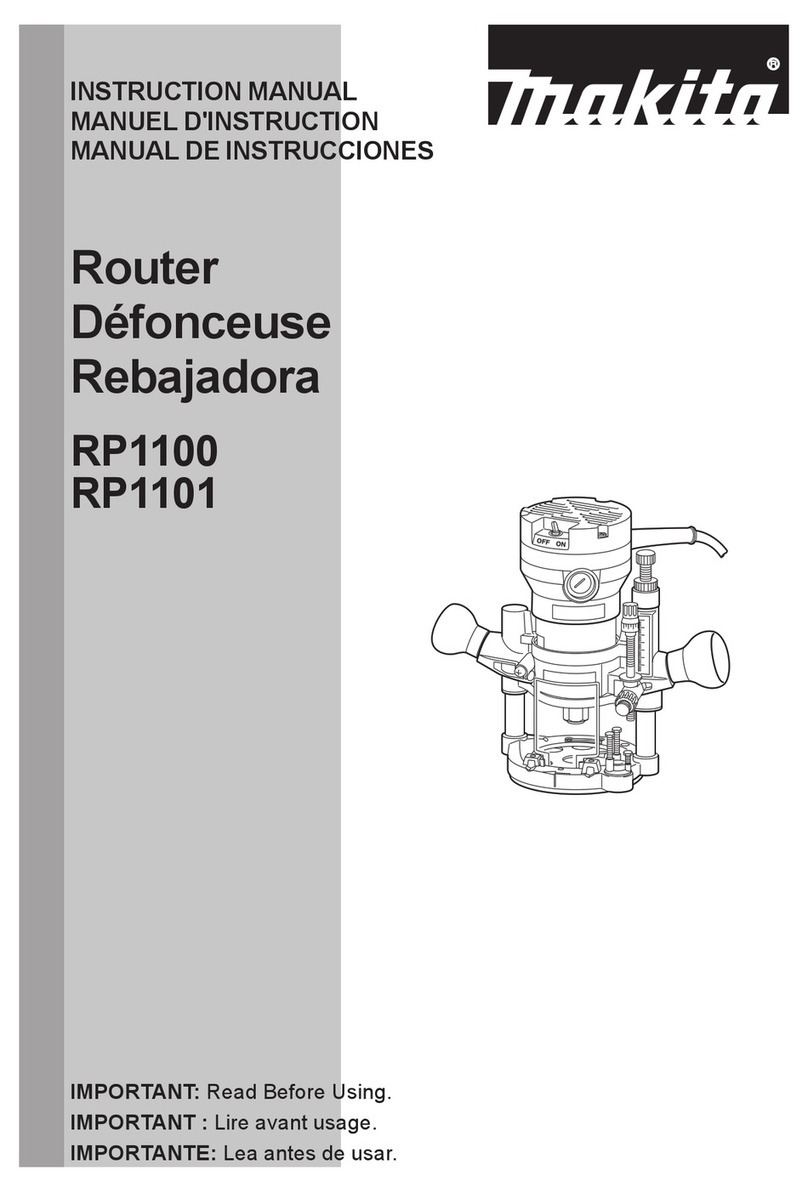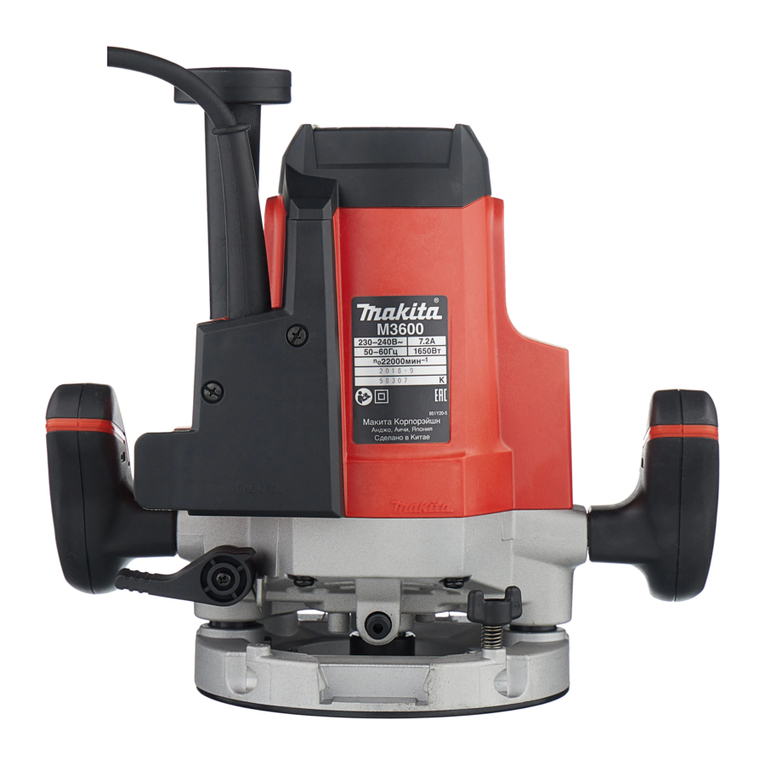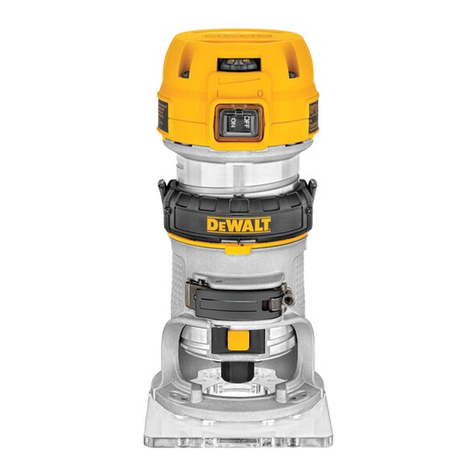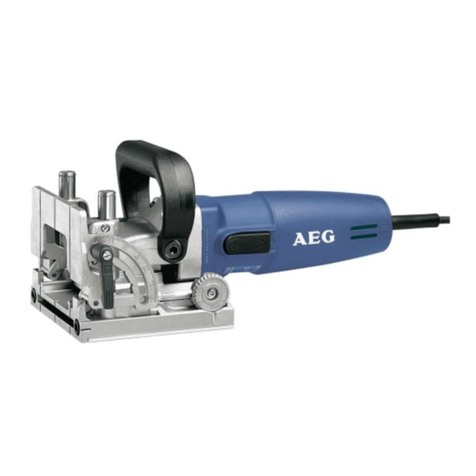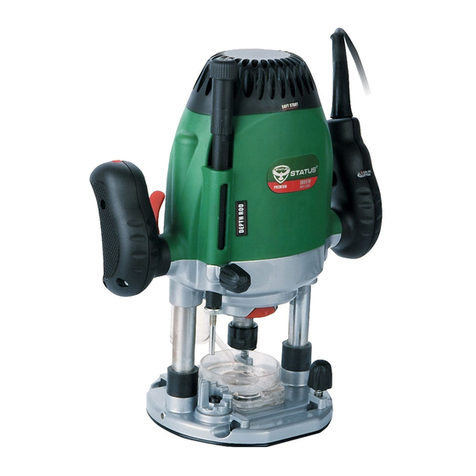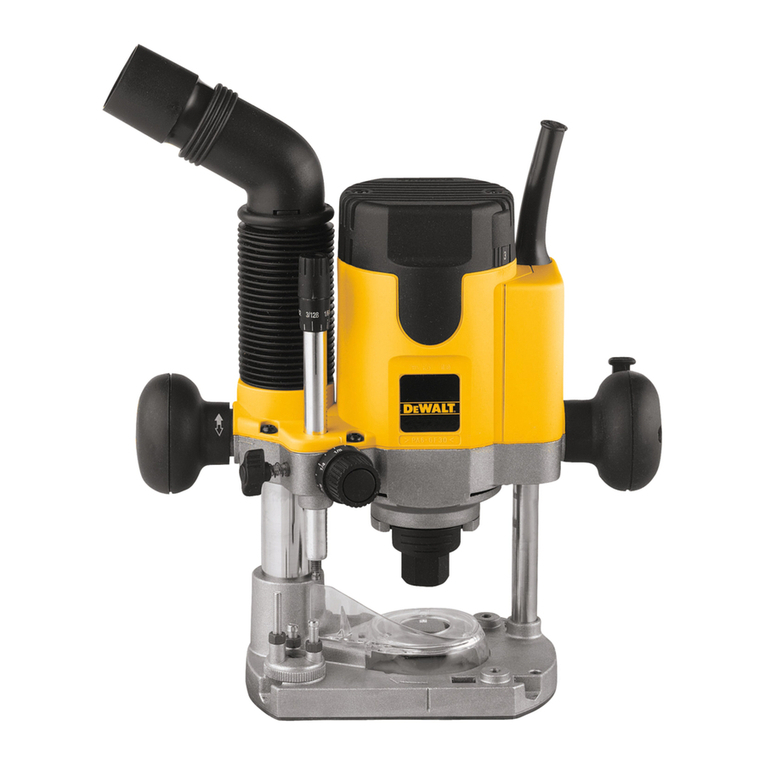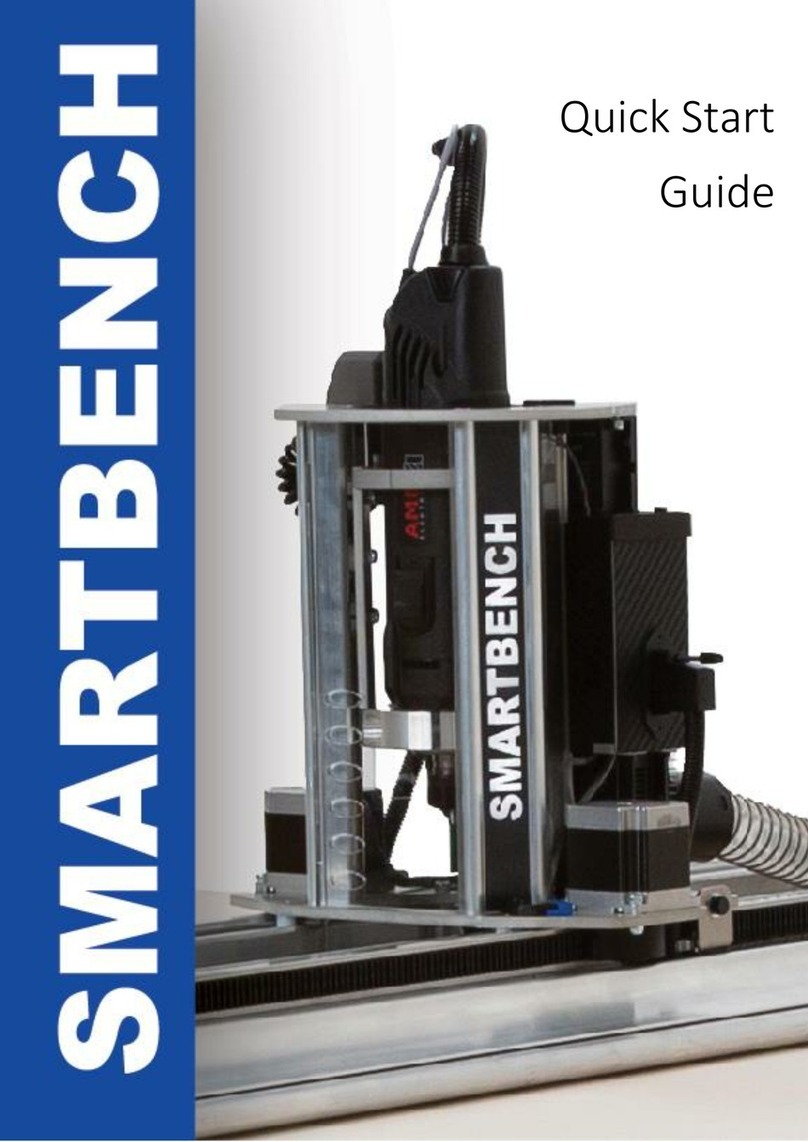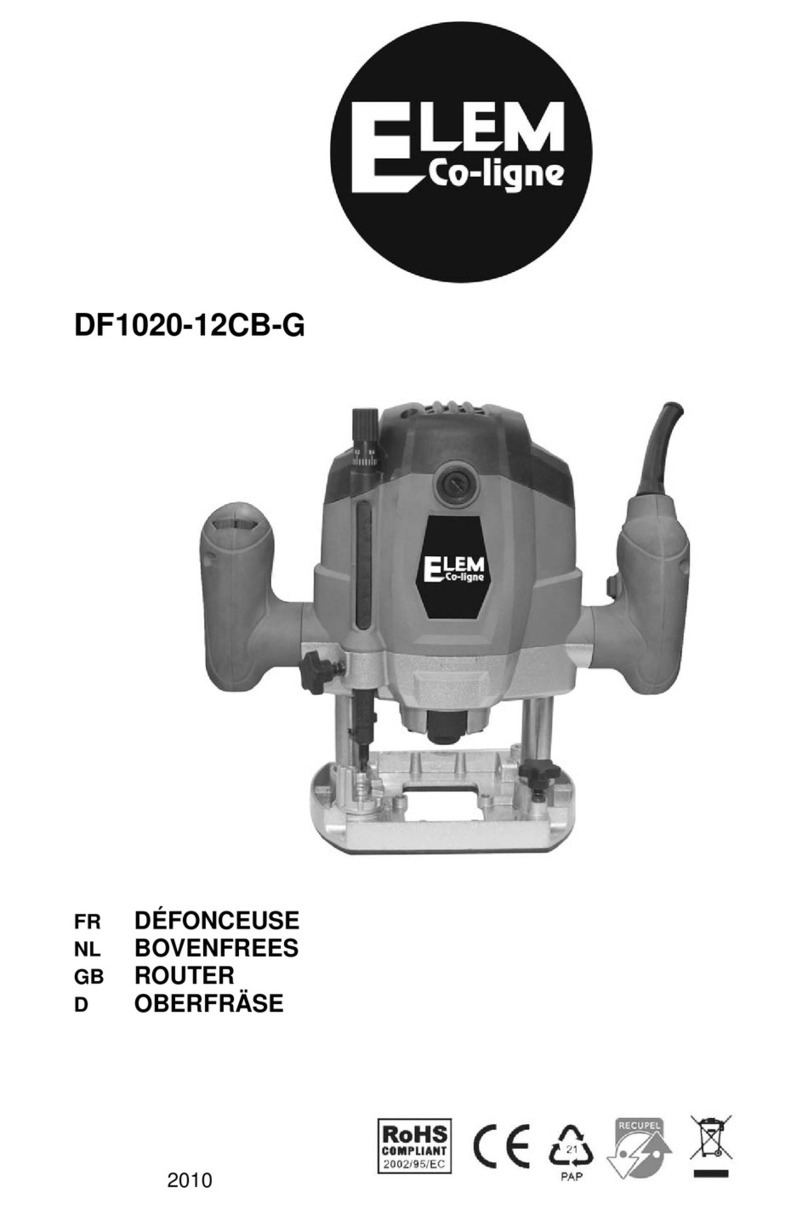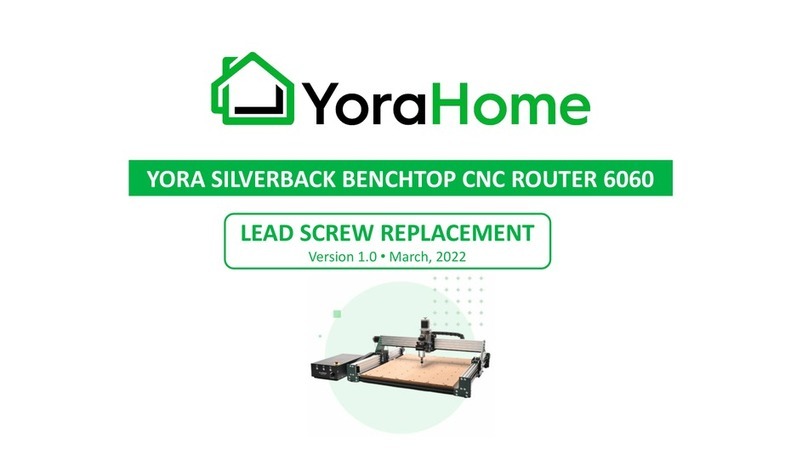
3
Do not force tool. Use the correct tool for your
application. The correct tool will do the job better and
safer at the rate for which it is designed.
Do not use tool if switch does not turn it “ON” or
“OFF.” Any tool that cannot be controlled with the switch
is dangerous and must be repaired.
Disconnect the plug from the power source before
making any adjustments, changing accessories, or
storing the tool. Such preventive safety measures reduce
the risk of starting the tool accidentally.
Keep guards in place. Maintain the guards in working order
and in proper adjustment and alignment.
Store idle tools out of reach of children and other
untrained persons. Tools are dangerous in the hands of
untrained users.
Never leave tools running unattended. Turn the power
OFF. DO NOT leave tool until it comes to a complete stop.
Maintain tools with care. Keep cutting tools sharp and
clean. Properly maintained tools, with sharp cutting edges
are less likely to bind and are easier to control. Any
alteration or modification is a misuse and may result in
a dangerous condition.
Check for damaged guards or parts, misalignment or
binding of moving parts, breakage of parts, and any
other condition that may affect the toolʼs operation.
If damaged, have the tool properly repaired or replaced
before using. Many accidents are caused by poorly
maintained tools. Develop a periodic maintenance
schedule for your tool.
Use only accessories that are recommended by the
manufacturer for your model. Accessories that may be
suitable for one tool may become hazardous when used
on another tool.
Service
Tool service must be performed only by qualified
repair personnel. Service or maintenance performed by
unqualified personnel could result in a risk of injury. For
example: internal wires may be misplaced or pinched;
safety guard return springs may be improperly mounted.
When servicing a tool, use only identical replacement
parts. Use of unauthorized parts or failure to follow
maintenance instructions may create a risk of electric shock
or injury. Certain cleaning agents such as gasoline, carbon
tetrachloride, and ammonia may damage plastic parts.
Additional Safety Warnings for Router Tables
Lift router table only by the table edges. Lifting table by
any other surface could cause personal injury.
Do not use the router table until all assembly and
installation steps have been completed. Prior to each
use, verify that fasteners and the router clamps are tight.
A loose table or router is unstable and may shift in use,
resulting in property damage or serious personal injury.
Disconnect the router from the power supply before
installing router into the table, making adjustments,
changing accessories, removing the router from the
table, performing maintenance, or storing the tool.
Such precautionary safety measures reduce the risk
of unintentional tool operation.
Do not plug router motor power cord into standard wall
outlet. Always plug router cord into the router table
switch box. Power tool switches and controls need to be
within your reach in emergency situations.
Do not permit fingers to touch terminals on the plug
when inserting or removing plug from the outlet. Risk
of Electric Shock.
Before connecting router or vacuum to router table
switch box, ensure that the router or vacuum switch is
off and that the router table switch box is unplugged.
Such precautionary safety measures reduce the risk of
unintentional tool operation.
Before using the router table, verify that the router is
securely clamped in the router table base. While
working, periodically check the router base fastener
clamping tightness. Vibrations from cutting operations can
cause router motor clamps to loosen and the router motor
may fall from the table.
Before starting to work, ensure that the power cords
from the router accessories, the switch box, and the
extension cord do not and cannot come in contact with
the router or any moving parts of the router. Such
precautionary safety measures reduce the risk of injury due
to loss of control.
Do not use the router table without the overhead guard
unless required by a particular cutting operation.
Replace guard immediately after completion of cutting
operation. Remove all dust, chips, and any other foreign
particles that can affect its function. The guard will aid in
keeping hands from unintended contact with the rotating bit.
Do not use bits that have a cutting diameter that
exceeds the clearance hole in the tabletop insert plate
or insert rings. The bit could contact the insert plate or
insert ring, throwing fragments.
Never use dull or damaged bits. Damaged bits can
snap during use. Dull bits require more force to push the
workpiece, possibly causing the bit to break or the material
to kick back.
Handle sharp bits with care. Such precautionary safety
measures reduce risk of injury.
Do not alter insert ring or insert plate bit hole. Match
the cutting diameter of the bit to the inner diameter
of the insert ring or insert plate bit hole such that the
difference is no less than 1/16″″on a side. Insert rings are
meant to reduce the gap between the cutting diameter of the
bit and the table so that workpieces maintain full support of
the table while routing.
Install bit in accordance with instructions in the router
manual. Securely clamp the router bit in the collet chuck
before making any cuts. Securing the bit before cutting
reduces the risk of the bit becoming loose during operation.
Never place your fingers near a spinning bit or under the
guard when the router is plugged in. Such precautionary
safety measures reduce the risk of injury.
Never hold the workpiece on the outfeed side of the bit.
Pressing the workpiece against the outfeed side of the fence
may cause material binding and possible kickback, pulling
your hand into the bit.
Guide the workpiece with the fence to maintain control
of the workpiece. Do not place the workpiece between
the router bit and fence while routing the edge. This
placement will cause the material to become wedged,
making kickback possible.
